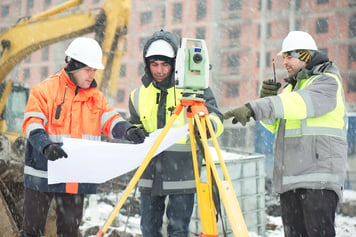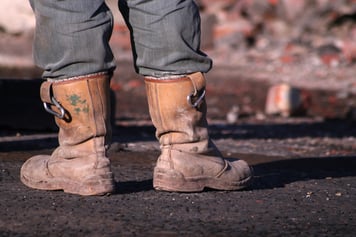Personal Protective Equipment Safety Checklist: Winter Hats, Vest, Gloves and Boots
- Home
- Team EJP Blog
- Personal Protective Equipment Safety Checklist: Winter Hats, Vest, Gloves and Boots
- Oct 14, 2016 9:00:00 AM
- Everett J. Prescott
Even as the fall is leaving a cool but pleasant atmosphere, with falling leaves, crisp air and wet weather, winter is just around the corner. Is your crew prepared? Does your department have sufficient personal protective equipment in good condition for the season to keep your crew warm and working well? At Team EJP, we're all about providing you with the information you need to keep your crew rolling along. Here's a quick checklist for your crew's winter personal protective safety equipment.

- Hats. When your crew needs to thaw out or repair a frozen main for the third time this week, having a hat that isn't getting the job done isn't just uncomfortable, it's downright dangerous. The human head has a lot of blood flowing to it to keep the brain and sensory organs functioning well, as well as to provide systematic cooling during the summer. Unfortunately, this also means that it's the fastest place the body loses heat in the winter. Make sure hats are in good repair and are available in sufficient quantity and sizes for your crew.
- Gloves. When the mercury dips, it becomes much harder to work with your hands. Frostbite can cause serious damage to your crew's hands, and wet conditions make it even more likely to develop in the cold. The cold can also make it much harder for your crew to manage dexterous tasks and easier for your crew to drop and lose or damage expensive equipment. Check that gloves have sufficient insulation and consider adding a fresh coat of waterproofing agent to keep them from getting too damp.
- Vests. Winter means shorter days, longer nights and more time spent in the dark. Insufficient reflection or brightness to the vests can put your crew in jeopardy. Set the vests out in a dark area and shine a flashlight at them. If you can't quickly and clearly pick out the vests, you must replace them. Many reflective garments have a particular number of washings before they should be removed from service, so make sure you keep a log of how often they are washed.

- Boots. Much like gloves, good quality boots with sufficient insulation help protect your crew's feet from frostbite and accidents from stumbling due to numb feet. But another area that is important is whether the tread is sufficient to help keep your crew on their feet and out of harm's way. To check the boots, take a good look at areas of wear and where the tread meets the upper to look for cracks or holes. Fill a basin with water and submerge the lower part of the boot to check whether any water is infiltrating the boot from unseen cracks. If the tread or upper is in rough shape, it's better to replace it now than wait until they are actually needed in the field.
Beyond these basics, you'll also want to check the function of any number of other items your crew only uses in the winter, such as warming blankets or freeze repair inventory. At Team EJP, we know it's vital for you to have the equipment and supplies you need when winter's cold clamps down on your town. Please feel free to contact us today for more details or with any questions.







